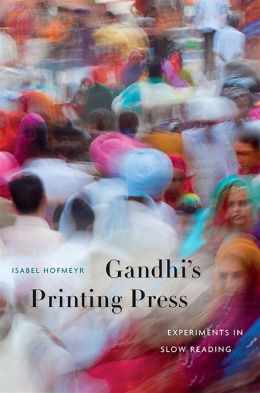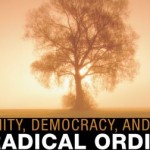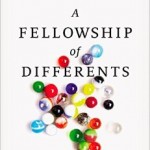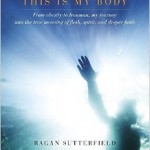 Here is a snapshot of my to-read list…
Here is a snapshot of my to-read list…
I don’t have much time for reading now, as we are very close to getting the Slow Church book manuscript wrapped up…
But once that’s done, I look forward to diving into some of these books this summer!
Currently reading:
Gandhi’s Printing Press: Experiments in Slow Reading by Isabel Hofmeyr
Re-reading to prepare for an overdue review for Books and Culture. Not only does this book provide a rich portrait of Gandhi’s years in South Africa, but the story it tells also makes a powerful case that slow, intentional and attentive reading can be a transformative shared practice for a faith community.
Prodigal Christianity: 10 Signposts into The Missional Frontier
by David Fitch and Geoff Holsclaw
Last week, I ran a controversial (and critical) review of this book on the Englewood Review of Books website. I’m re-reading to process how much of that review I agree with, and to track better with the conversation about the book.
Wind And Weather: Poems by Liberty Hyde Bailey
Seems that I am never able to put this book of earthy poems down. Right now, it’s providing inspiration as I finish up my last parts of the Slow Church book manuscript.
Hoping to read this summer:
My most anticipated book of the summer is Fred Bahnson’s Soil and Sacrament: Food, Faith and Growing Heaven on Earth (Free Press, August). This volume is an account of faith communities that take food and farming seriously, and is rooted (pardon the pun) in a “a road trip [that Bahnson] spent visiting different faith-based agrarian groups, one for each season—from a community of Roman Catholic monks who pursue a life of contemplation while harvesting rare mushrooms on a Southern plantation, to a Jewish organic farm in the Berkshires, where he and other young people learn the agrarian arts of ancient Israel right in Connecticut.” If you want a taste of what this book will be about, be sure to watch the video of Bahnson’s recent TEDx Manhattan talk: http://bit.ly/Bahnson-TEDx
Another highly anticipated book of the summer, is former U.S. Poet Laureate Robert Pinsky’s new book Singing School: Learning to Write (and Read) Poetry by Studying with the Masters (W.W. Norton, August). “Quick, joyful, and playfully astringent, with surprising comparisons and examples, this collection takes an unconventional approach to the art of poetry. Instead of rules, theories, or recipes, Singing School emphasizes ways to learn from great work: studying magnificent, monumentally enduring poems and how they are made— in terms borrowed from the ‘singing school’ of William Butler Yeats’s ‘Sailing to Byzantium.’ Robert Pinsky’s headnotes for each of the 80 poems and his brief introductions to each section take a writer’s view of specific works.”
Bridging the gap between poetry and fiction, comes the novel-in-verse Love, Dishonor, Marry, Die, Cherish, Perish by the late writer David Rakoff (Doubleday, July). Made famous by his radio essays for NPR’s This American Life, Rakoff’s work has been characterized by Ira Glass as “very funny and very sad,” a combination that, if it holds true in this new book, will make for promising reading. This new novel is structured upon a series of characters whose lives span the 20th century and who are interconnected “by acts of generosity or cruelty.”
My most anticipated novel of the summer, however, is definitely Edwidge Danticat’s Haitian-set novel Claire of the Sea Light (Knopf, August). “Claire’s mother died in childbirth, and on each of her birthdays Claire is taken by her father, Nozias, to visit her mother’s grave. Nozias wonders if he should give away his young daughter to a local shopkeeper who lost a child of her own, so he can give her a better life. But on the night of Claire’s seventh birthday, when he makes the wrenching decision to do so, she disappears. … Told with the piercing lyricism and economy of a fable, Claire of the Sea Light explores what it means to be a parent, child, neighbor, lover, and friend, while indelibly revealing the mysterious connections we share with the natural world and with one another, amid the magic and heartbreak of ordinary life.”
And finally two (philosophically-inclined) architecture books that I hope to read in my continuing quest to understand and exegete my urban nieghborhood…
First, Rowan Moore’s Why We Build: Power and Desire in Architecture (Harper Design, August). “In Why We Build Rowan Moore shows how buildings are driven by human emotions and desires – such as hope, power, money, sex, and the idea of home – and how buildings then shape our experiences. He explores the making of buildings from conception to inhabitation, and reveals the paradoxical power of architecture: it looks fixed and solid, but is always changing, in response to the lives around it.”
And finally, Landscape Urbanism and its Discontents: Dissimulating the Sustainable City, a collection of essays edited by New Urbanist Andres Duany and Emily Talon (New Society, May). This promising volume explores the intersections of landscape architecture, which defines ecology in terms of natural processes, and new urbanism, which defines ecology in terms of humanity and social processes.












